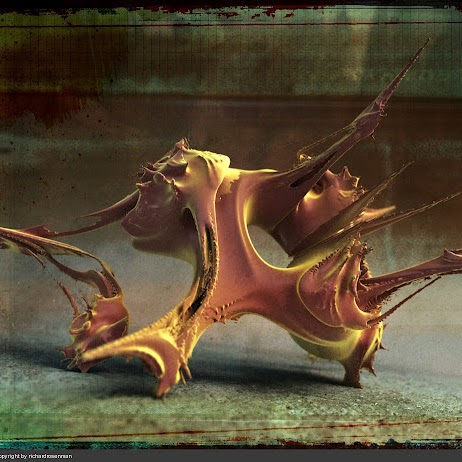Douglas P Christensen
age ~56
from Wayne, NE
- Also known as:
-
- Douglas Patrick Christensen
- Doug P Christensen
- Douglas P Lfest
- Phone and address:
-
1422 Claycomb Rd, Wayne, NE 68787
(402)3755210
Douglas Christensen Phones & Addresses
- 1422 Claycomb Rd, Wayne, NE 68787 • (402)3755210
- 1009 Sherman St, Wayne, NE 68787
- 608 Michener St, Wakefield, NE 68784 • (402)2872546 • (402)2879898
- Crete, NE
- 2556 Noble Rd, Raleigh, NC 27608 • (919)8213962
- 3305 Portia St, Lincoln, NE 68521
- 4617 Madison Ave #4, Lincoln, NE 68504 • (402)4655596
- 3508 Huntington Ave, Lincoln, NE 68504
Work
-
Company:Christensen, Fonder, Dardi & Herbert PLLC
-
Address:
Specialities
Intellectual Property
Us Patents
-
Integrated Optic Waveguide Immunosensor
view source -
US Patent:6350413, Feb 26, 2002
-
Filed:Oct 5, 1999
-
Appl. No.:09/412731
-
Inventors:W. Monty Reichert - Durham NC
James N. Herron - Salt Lake City UT
Douglas A. Christensen - Salt Lake City UT
Hsu-Kun Wang - Salt Lake City UT -
Assignee:University of Utah Research Foundation - Salt Lake City UT
-
International Classification:G01N 3353
-
US Classification:422 8211, 422 8205, 436150, 436164, 385 12
-
Abstract:A step-gradient composite waveguide for evanescent sensing in fluorescent binding assays comprises a thick substrate layer having one or more thin film waveguide channels deposited thereon. In one embodiment, the substrate is silicon dioxide and the thin film is silicon oxynitride. Specific binding molecules having the property of binding with specificity to an analyte are immobilized on the surface of the thin film channels. In preferred embodiments, the composite waveguide further includes light input coupling means integrally adapted to the thin film channels. Such light coupling means can be a grating etched into the substrate prior to deposition of the thin film, or a waveguide coupler affixed to the upper surface of the thin film. The waveguide coupler has a thick input waveguide of high refractive index which receives the laser light through one end and propagates it by total internal reflection. The propagated light is then coupled evanescently into the thin film waveguide across a spacer layer of precise thickness and having an index of refraction lower than either the input waveguide or the thin-film waveguide.
-
Composite Waveguide For Solid Phase Binding Assays
view source -
US Patent:6911344, Jun 28, 2005
-
Filed:Nov 3, 1998
-
Appl. No.:09/185318
-
Inventors:W. Monty Reichert - Durham NC, US
James N. Herron - Salt Lake City UT, US
Douglas A. Christensen - Salt Lake City UT, US
Hsu-Kun Wang - Salt Lake City UT, US
Jacob D. Durtschi - Salt Lake City UT, US -
Assignee:BioCentrex, LLC - Culver City CA
-
International Classification:G01N033/543
-
US Classification:436518, 356317, 356318, 385 12, 385123, 385129, 422 8205, 422 8208, 422 8211, 435 6, 435 75, 4352871, 4352872, 4352887, 435808, 436164, 436172, 436527, 436531, 436805
-
Abstract:A step-gradient composite waveguide for evanescent sensing in fluorescent binding assays comprises a thick substrate layer having one or more thin film waveguide channels deposited thereon. In one embodiment, the substrate is silicon dioxide and the thin film is silicon oxynitride. Specific binding molecules having the property of binding with specificity to an analyte are immobilized on the surface of the thin film channels. In preferred embodiments, the composite waveguide further includes light input coupling means integrally adapted to the thin film channels. Such light coupling means can be a grating etched into the substrate prior to deposition of the thin film, or a waveguide coupler affixed to the upper surface of the thin film. The waveguide coupler has a thick input waveguide of high refractive index which receives the laser light through one end and propagates it by total internal reflection. The propagated light is then coupled evanescently into the thin film waveguide across a spacer layer of precise thickness and having an index of refraction lower than either the input waveguide or the thin-film waveguide.
-
Integrated Optic Waveguide Immunosensor
view source -
US Patent:7537734, May 26, 2009
-
Filed:Oct 10, 2001
-
Appl. No.:09/973557
-
Inventors:W. Monty Reichert - Durham NC, US
James N. Herron - Salt Lake City UT, US
Douglas A. Christensen - Salt Lake City UT, US
Hsu-Kun Wang - Salt Lake City UT, US -
Assignee:University of Utah Research Foundation - Salt Lake City UT
-
International Classification:G01N 21/00
G01N 33/53
G01N 33/552
G01N 21/55
G01N 21/41
G02B 6/00 -
US Classification:422 8211, 435 79, 436518, 356445, 356 12, 356128
-
Abstract:A composite waveguide for evanescent sensing in fluorescent binding assays comprising a substrate layer having one or more thin-film waveguide channels deposited thereon. Binding molecules having the property of binding with specificity to an analyte are immobilized on the surface of the thin-film channels. In preferred embodiments, the composite waveguide includes integral light input coupling means adapted to the thin-film channels. Light coupling means may include a grating etched into the substrate prior to deposition of the thin film, or a waveguide coupler affixed to the upper surface of the thin film. The waveguide coupler has an input waveguide of high refractive index which receives the laser light through one end, propagating it by total internal reflection. Propagated light is coupled evanescently into the thin film across a spacer layer of precise thickness with a lower index of refraction than that of the input waveguide or the thin-film waveguide.
-
Integrated Optic Waveguide Immunosensor
view source -
US Patent:59619244, Oct 5, 1999
-
Filed:Oct 31, 1997
-
Appl. No.:8/961827
-
Inventors:W. Monty Reichert - Durham NC
James N. Herron - Salt Lake City UT
Douglas A. Christensen - Salt Lake City UT
Hsu-Kun Wang - Salt Lake City UT -
Assignee:University of Utah Research Foundation - Salt Lake City UT
-
International Classification:G01N 3353
G01N 2117 -
US Classification:422 8211
-
Abstract:A step-gradient composite waveguide for evanescent sensing in fluorescent binding assays comprises a thick substrate layer having one or more thin film waveguide channels deposited thereon. In one embodiment, the substrate is silicon dioxide and the thin film is silicon oxynitride. Specific binding molecules having the property of binding with specificity to an analyte are immobilized on the surface of the thin film channels. In preferred embodiments, the composite waveguide further includes light input coupling means integrally adapted to the thin film channels. Such light coupling means can be a grating etched into the substrate prior to deposition of the thin film, or a waveguide coupler affixed to the upper surface of the thin film. The waveguide coupler has a thick input waveguide of high refractive index which receives the laser light through one end and propagates it by total internal reflection. The propagated light is then coupled evanescently into the thin film waveguide across a spacer layer of precise thickness and having an index of refraction lower than either the input waveguide or the thin-film waveguide.
-
Composite Waveguide For Solid Phase Binding Assays
view source -
US Patent:58321659, Nov 3, 1998
-
Filed:Aug 28, 1996
-
Appl. No.:8/705893
-
Inventors:W. Monty Reichert - Durham NC
James N. Herron - Salt Lake City UT
Douglas A. Christensen - Salt Lake City UT
Hsu-Kun Wang - Salt Lake City UT -
Assignee:University of Utah Research Foundation - Salt Lake City UT
-
International Classification:G02B 610
-
US Classification:385130
-
Abstract:A step-gradient composite waveguide for evanescent sensing in fluorescent binding assays comprises a thick substrate layer having one or more thin film waveguide channels deposited thereon. In one embodiment, the substrate is silicon dioxide and the thin film is silicon oxynitride. Specific binding molecules having the property of binding with specificity to an analyte are immobilized on the surface of the thin film channels. In preferred embodiments, the composite waveguide further includes light input coupling means integrally adapted to the thin film channels. Such light coupling means can be a grating etched into the substrate prior to deposition of the thin film, or a waveguide coupler affixed to the upper surface of the thin film. The waveguide coupler has a thick input waveguide of high refractive index which receives the laser light through one end and propagates it by total internal reflection. The propagated light is then coupled evanescently into the thin film waveguide across a spacer layer of precise thickness and having an index of refraction lower than either the input waveguide or the thin-film waveguide.
-
Integrated Optic Waveguide Immunosensor
view source -
US Patent:58145656, Sep 29, 1998
-
Filed:Feb 23, 1995
-
Appl. No.:8/393450
-
Inventors:W. Monty Reichert - Durham NC
James N. Herron - Salt Lake City UT
Douglas A. Christensen - Salt Lake City UT
Hsu-Kun Wang - Salt Lake City UT -
Assignee:University of Utah Research Foundation - Salt Lake City UT
-
International Classification:G01N 3353
G01N 2117 -
US Classification:422 8211
-
Abstract:A step-gradient composite waveguide for evanescent sensing in fluorescent binding assays comprises a thick substrate layer having one or more thin film waveguide channels deposited thereon. In one embodiment, the substrate is silicon dioxide and the thin film is silicon oxynitride. Specific binding molecules having the property of binding with specificity to an analyte are immobilized on the surface of the thin film channels. In preferred embodiments, the composite waveguide further includes light input coupling means integrally adapted to the thin film channels. Such light coupling means can be a grating etched into the substrate prior to deposition of the thin film, or a waveguide coupler affixed to the upper surface of the thin film. The waveguide coupler has a thick input waveguide of high refractive index which receives the laser light through one end and propagates it by total internal reflection. The propagated light is then coupled evanescently into the thin film waveguide across a spacer layer of precise thickness and having an index of refraction lower than either the input waveguide or the thin-film waveguide.
Medicine Doctors

Douglas D. Christensen
view sourceDescription:
Dr. Christensen graduated from the Universidad Autu00F3noma de Guadalajara, Guadalajara, Jalisco, Mexico in 1998. He works in Lone Tree, CO and 1 other location and specializes in Pediatric Cardiology. Dr. Christensen is affiliated with Rocky Mountain Hospital For Children and Sky Ridge Medical Center.
Resumes

Douglas Christensen
view source
Douglas Christensen
view sourceLicense Records
Douglas Driggs Christensen Md
License #:
23439 - Active
Category:
Medicine
Issued Date:
Aug 19, 2005
Effective Date:
Oct 3, 2006
Expiration Date:
Oct 1, 2018
Type:
Physician
Lawyers & Attorneys

Douglas Christensen - Lawyer
view sourceOffice:
Christensen, Fonder, Dardi & Herbert PLLC
Specialties:
Intellectual Property
ISLN:
908396779
Admitted:
1985
University:
University of Minnesota, B.S., 1977
Law School:
Hamline University, J.D., 1985
Name / Title
Company / Classification
Phones & Addresses
Manager
General Counsels Office
Administration of Educational Programs
Administration of Educational Programs
301 Centennial Mall S #6, Lincoln, NE 68508
(402)4710730
(402)4710730

Douglas Christensen
view sourceGoogleplus

Douglas Christensen
Education:
Grand Rapids Community College - Computer Science, Brimley High School
Relationship:
Engaged
About:
Jack of all trades, gamer (Xbox: Dubhghlas), lefty, weather lover (severe storms and tropics), computer nerd.
Tagline:
Extremely Liberal, Gamer, Computer Nerd
Bragging Rights:
My future trophy wife.

Douglas Christensen

Douglas Christensen

Douglas Christensen

Douglas Christensen

Douglas Christensen

Douglas Christensen

Douglas Christensen
Plaxo

Douglas Peter Christensen
view sourcePinckney, MISr Management Analyst at Better Made Snack Foods
Youtube
Get Report for Douglas P Christensen from Wayne, NE, age ~56





